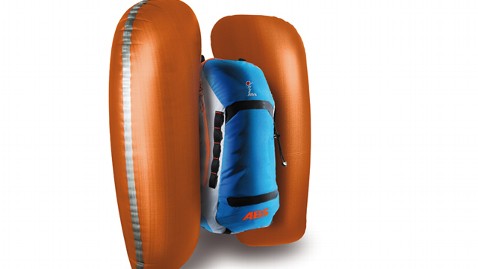Airbag That Saved Skier in Avalanche a Hit With Winter Sports Enthusiasts

(Image credit: Courtesy ABS Avalanche Rescue Services Inc.)
The airbag backpack seems to be getting a second look - among other snow-safety tips - after an advanced skier credited hers with saving her life this weekend in an avalanche that killed three others.
Elyse Saugstad told ABC News today that when the avalanche occurred Sunday in Washington state's Cascade Mountains, "the first thing that came to my mind was to use my airbag device."
"There's basically a system where you have a lever on the chest part of the backpack," she said. "It's a normal backpack and when you pull the lever. … It deploys the airbags to fill up with air and what it essentially does is, it keeps you above the avalanche."
Steve Wagner, CEO of ABS Avalanche Rescue Services Inc., the North American branch of the German company that made Saugstad's backpack, said there was a 97 percent survival rate for those wearing its product.
"It's the only thing that you can do for yourself when caught in an avalanche," he told ABC News today.
The backpack costs from $1,000 to $1,200.
The international media reported last week that a companion of Dutch Prince Johan Friso was wearing an ABS airbag when an avalanche overtook his group.
Friso was rescued and is in stable but life-threatening condition, according to the Netherlands' royal information service.
ABS' founder invented the airbag in 1985 but it has become mainstream in Europe in the past six years. Sales have taken off in North America in the past 24 months, Wagner said.
He said professionals have carried the airbags as well as ski patrols and guides at popular ski resorts such as Jackson Hole, Wyo.
"[The reaction] has been very good. There is a growing wave of acceptance in the community that this actually works," Wagner told ABC News today.
In addition to carrying a beacon, probe, shovel and even a helmet, here are other tips from the National Snow and Ice Data Center for surviving an avalanche:
- Yell and let go of ski poles. Use swimming motions. If you end up near the surface, stick out an arm or leg so rescuers can find you.
- If the snow is over your head, try to make an air pocket in front of your face with your hands and arms. Take a deep breath and hold it or you might not be able to breathe after the snow sets.
- Do not panic and keep your breathing steady.